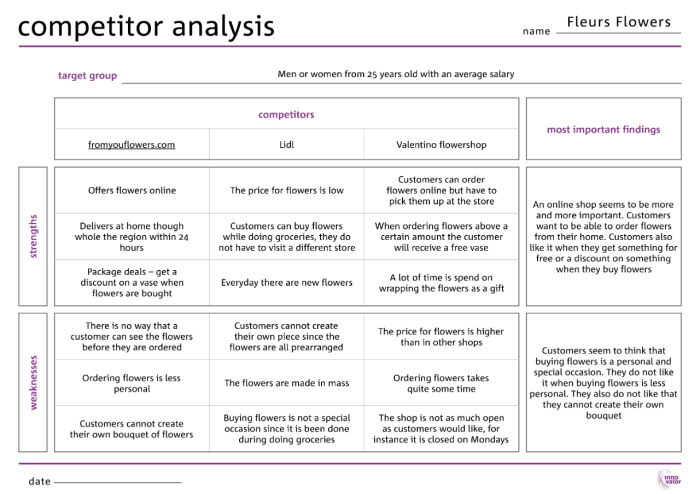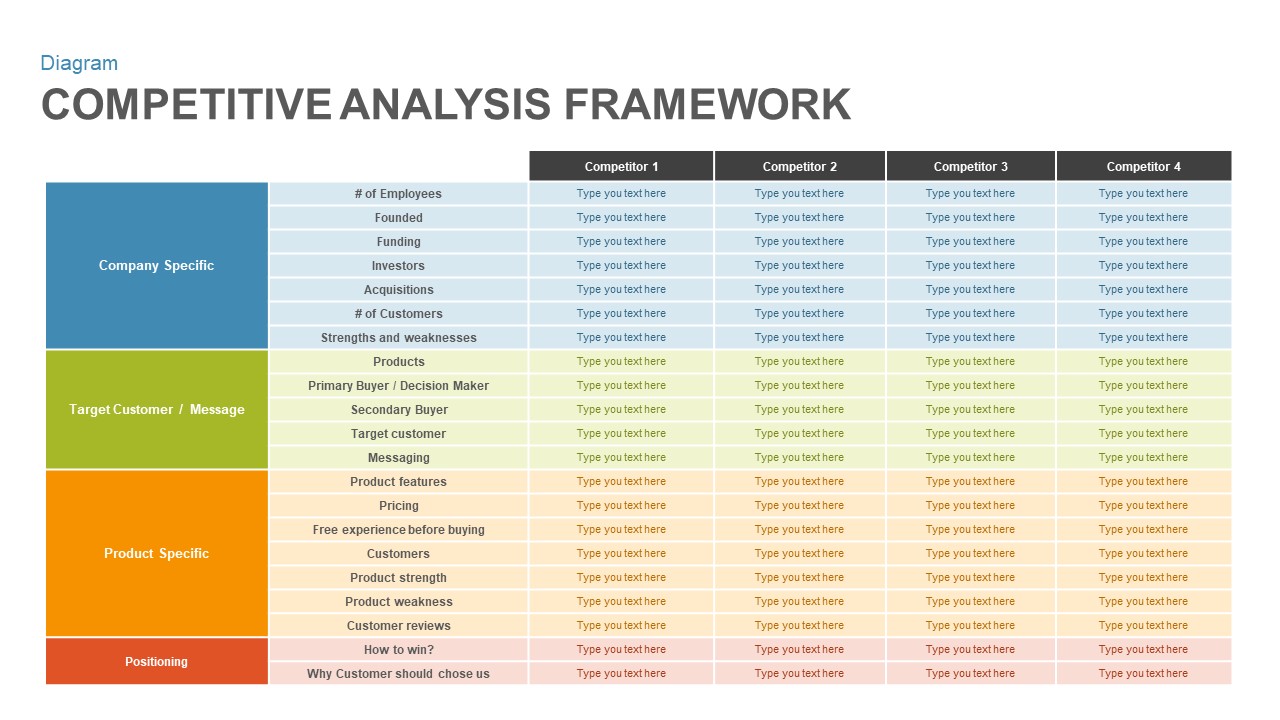Competitor Analysis Tips: Get ready to dive into the world of analyzing your rivals like a pro. From understanding the importance to exploring different types of competitors, this guide will equip you with the tools and strategies needed to stay ahead of the competition.
Whether you’re a seasoned business owner or a newbie entrepreneur, mastering competitor analysis is essential for making informed decisions and gaining a competitive edge in the market.
Importance of Competitor Analysis
Competitor analysis is a crucial aspect for businesses looking to stay ahead in the market. By understanding the strengths and weaknesses of competitors, companies can make informed decisions to improve their own strategies.
Identifying Market Trends
Regularly analyzing competitors allows businesses to stay updated on the latest market trends and changes. This information can help in adapting products or services to meet consumer demands effectively.
Gaining Competitive Advantage
Studying competitors provides valuable insights into what works and what doesn’t in the industry. This knowledge can be leveraged to differentiate a business and offer unique value propositions to customers.
Influencing Strategic Decision-Making
Competitor analysis plays a significant role in shaping strategic decisions within a company. For instance, knowing how competitors price their products can help in setting competitive prices or developing a pricing strategy that attracts more customers.
Types of Competitors to Analyze
When conducting competitor analysis, it’s crucial to consider different types of competitors to gain a comprehensive understanding of the market landscape.
Direct Competitors
Direct competitors are businesses that offer the same products or services to the same target market. They are the most obvious competitors and pose a direct threat to your market share. Examples include Coca-Cola and Pepsi in the beverage industry.
Indirect Competitors
Indirect competitors offer different products or services but compete for the same consumer dollars. They can be substitutes for your offerings. For instance, a movie theater competes indirectly with a bowling alley for entertainment spending.
Potential Competitors
Potential competitors are new entrants to the market or existing businesses that may pivot their offerings to directly compete with you in the future. It’s essential to keep an eye on potential competitors to anticipate any threats to your business.
Analyzing these different types of competitors provides a holistic view of the competitive landscape. By understanding how direct, indirect, and potential competitors operate, you can better position your business and identify opportunities for growth and differentiation.
Tools and Methods for Competitor Analysis: Competitor Analysis Tips

Competitor analysis is a crucial part of any business strategy. To effectively analyze your competitors, you need the right tools and methods to gather data and extract valuable insights. Here we’ll discuss popular tools, effective methods, and tips for interpreting and utilizing the information obtained.
Popular Tools for Competitor Analysis, Competitor Analysis Tips
- Semrush: This tool provides in-depth competitor analysis, research, and backlink analysis to help you understand your competition’s strategies.
- SpyFu: SpyFu allows you to spy on your competitors’ AdWords campaigns, organic search rankings, and performance.
- Ahrefs: Ahrefs is a powerful tool for analyzing your competitors’ backlinks, organic search traffic, and content strategies.
- Google Alerts: Set up alerts for your competitors’ brand mentions, product launches, or industry news to stay updated on their activities.
Effective Methods for Gathering Data on Competitors
- Website Analysis: Study your competitors’ websites to analyze their content, design, user experience, and strategies.
- Social Media Monitoring: Monitor your competitors’ social media profiles to understand their engagement, content strategy, and audience demographics.
- Customer Feedback: Gather feedback from your customers about your competitors to identify their strengths and weaknesses.
- Surveys and Interviews: Conduct surveys or interviews with industry experts to gain insights into your competitors’ market positioning and strategies.
Tips for Interpreting and Utilizing Competitor Analysis
- Identify Competitor Gaps: Look for areas where your competitors are lacking and capitalize on those opportunities to differentiate your business.
- Benchmark Performance: Compare your performance metrics with your competitors to set realistic goals and improve your strategies.
- Stay Updated: Regularly monitor your competitors’ activities and adjust your strategies accordingly to stay ahead in the market.
- Collaborate with Industry Experts: Seek advice from industry experts or consultants to gain a deeper understanding of your competitors’ strategies and market trends.
Benchmarking Strategies

Benchmarking is a crucial aspect of competitor analysis that involves comparing your business performance metrics against those of your competitors. By setting up benchmarking strategies, you can identify areas where you excel and areas where you need improvement in comparison to your competitors.
Steps for Setting up Benchmarking Metrics
- Identify Key Performance Indicators (KPIs) to measure success.
- Research and gather data on your competitors’ performance in these KPIs.
- Analyze the data to determine where your business stands compared to competitors.
- Set realistic goals for improvement based on benchmarking results.
- Regularly monitor and adjust your strategies to stay competitive.
Examples of Successful Benchmarking Strategies
| Company | Benchmarking Strategy |
|---|---|
| Apple | Apple consistently benchmarks its products against competitors to ensure they are ahead in terms of design, features, and user experience. |
| McDonald’s | McDonald’s benchmarks its customer service metrics against other fast-food chains to maintain high customer satisfaction levels. |
| Amazon | Amazon uses benchmarking to optimize its pricing strategies by comparing prices of products with competitors and adjusting accordingly to stay competitive. |